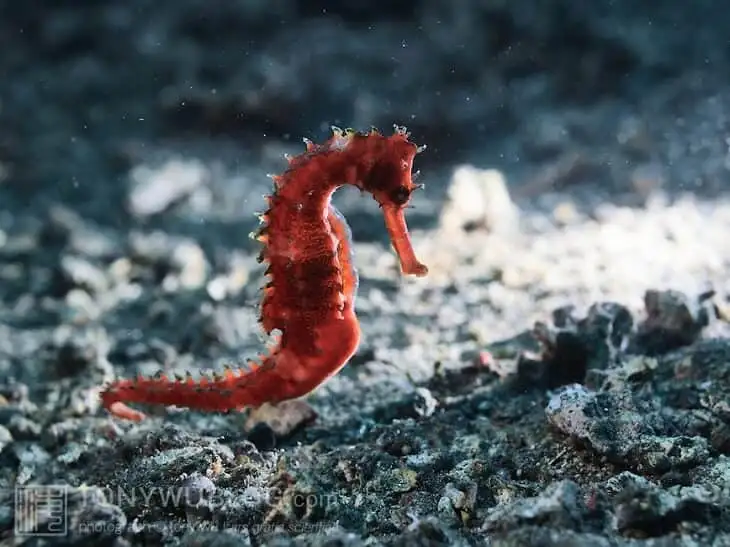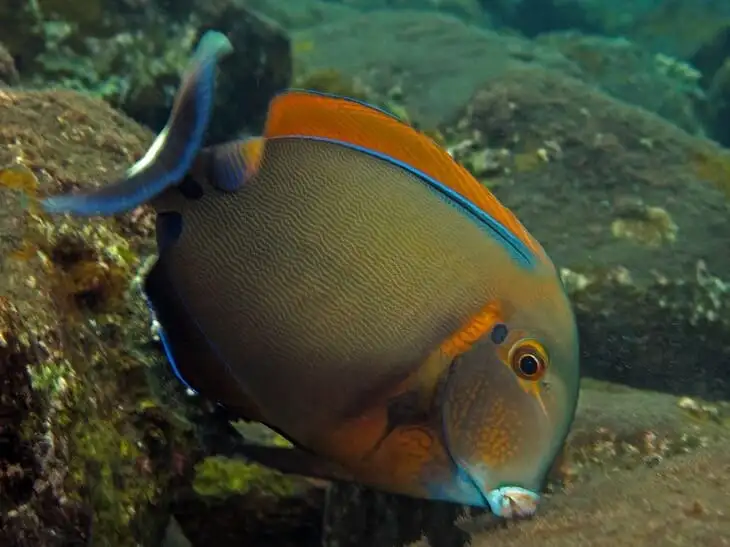Hippocampus barbouri

Hippocampus barbouri is the only seahorse species found only in Southeast Asia, along the coasts of Indonesia, Malaysia, and the Philippines. These seahorses can be found in shallow water, in seagrass fields, at depths of up to 10 m, along shorelines and in quiet bays.
Barbour's seahorse has well-developed barbs. The snout is thin and striated, and the crown is moderately high with 4-5 spines. Tail is relatively short in relation to body and has a number of long and short spines. Thin lines are visible on the eyes. The body coloration of the skate ranges from white to yellow, greenish-gray, light brown, and may have red-brown spots or lines. Males measure 11 to 15 cm, while females are slightly smaller, 11 to 13 cm.
Hippocampus barbouri get along well in a common aquarium with other skates of their family and do not harm invertebrates. Conflicts arise with them only with fish, and it does not matter if they are peaceful or aggressive, large or small. Therefore, it is desirable to keep skates in a species aquarium. Also a danger to seahorses are polyps and actinids.
To keep Hippocampus barbouri quite enough aquarium of 100 liters. in the aquarium can contain 2 pairs of skates.
As the ground should be used sand. At the bottom must be placed live rock, which not only decorate the aquarium landscape, but also will be a source of additional food, because in their cavities are a large number of small crustaceans, which feed on skates. Also in the aquarium should be placed branching corals, among the branches of which are very fond of spending their time skates. Would not be superfluous and live algae, such as caulerpa, or replace them with artificial analogues.
Water parameters: temperature 24-26° C, pH 8,0-8,5, salinity 1.020-1.026. Requires filtration and aeration of water, with circulation of water should be minimal.
Under aquarium conditions Barbour's seahorse feed artemia. Adult individuals are fed fish fry (guppies, mollinesias, pecilli, etc.). Also give the seahorses pre-shredded shrimp meat, squid and mussels. Food should be given in small portions, seeking to ensure that it as long as possible remained in the water column, since skates do not take food from the bottom. Feed skates need 2-3 times a day.
Reproduction
Like many seahorses Hippocampus barbouri breeds several times a season, sometimes with the same female for several seasons in a row. Females lay their eggs in the male's special sac, which is separated from the body by a cartilaginous septum. During the incubation of eggs, the males constantly swathe the eggs, thus preventing them from becoming sour. The eggs are incubated for 12-14 days.
Usually 10 to 250 larvae appear per spawning session. The larvae are quite large, about 5 mm in length. Tiny skates lead an independent life from their parents from the first day of their birth. Most males become sexually mature when they reach 8 cm in size, as evidenced by the presence of a brood sac and a fully developed reproductive system.





